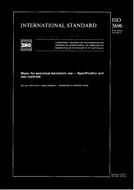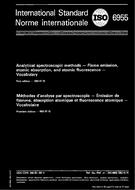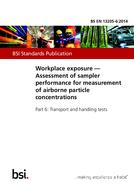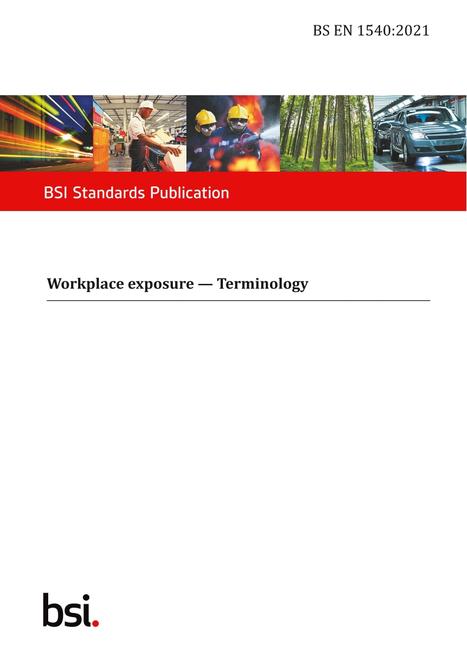-
-
Available Formats
- Options
- Availability
- Priced From ( in USD )
-
Available Formats
-
- Secure PDF 🔒
- Immediate download
- $368.30
- Add to Cart
-
- Printed Edition
- Ships in 1-2 business days
- $368.30
- Add to Cart
-
- Printed Edition + PDF
- Immediate download
- $497.84
- Add to Cart
Customers Who Bought This Also Bought
-

ISO 3696:1987
Priced From $54.00 -

ISO 6955:1982
Priced From $149.00 -

BS EN 13205-6:2014
Priced From $190.50 -

BS EN 1540:2021
Priced From $309.88
About This Item
Full Description
This International Standard is applicable to the assessment of personal exposure to mercury vapour and/or particulate inorganic mercury compounds in air for comparison with long-term or short-term exposure limits for mercury and inorganic mercury compounds and for static (area) sampling. The lower limit of the working range of the procedure is the quantification limit. This is determined by the sampling and analysis methods selected by the user, but it is typically in the range 0,01 µg to 0,04 µg of mercury. The upper limit of the working range of the procedure is determined by the capacity of the diffusive badge, sorbent tube or filter used for sample collection, but it is at least 30 µg of mercury. The concentration range of mercury in air for which this International Standard is applicable is determined in part by the sampling method selected by the user, but it is also dependent on the air sample volume.
The diffusive badge method is not applicable to measurements of mercury vapour when chlorine is present in the atmosphere, e.g. in chloralkali works, but chlorine does not interfere with the pumped sorbent tube method. Gaseous organomercury compounds could cause a positive interference in the measurement of mercury vapour. Similarly, particulate organomercury compounds and gaseous organomercury compounds adsorbed onto airborne particles could cause a positive interference in the measurement of particulate inorganic mercury compounds.
Cross References:
ISO 648
ISO 1042
ISO 3585
ISO 3696:1987
ISO 7708:1995
ISO 8655-1
ISO 8655-2
ISO 8655-5
ISO 8655-6
EN 13205:2002
EN 1540:1998
EN 1232:1997
EN 838:1995
EN 1076:1997
ISO 9169:2006
EN 482:1994
ISO 3534-1:2006
ISO/IEC Guide 99:2007
ISO/IEC Guide 98-3:2008
GUM:1995
ISO 6955:1982
EN 689:1995
ASTM D4840-88
ASTM E882?87
ISO 9004:2009
EN 13890:2002
ISO 16107:2007
ASTM E1370-96
All current amendments available at time of purchase are included with the purchase of this document.
Document History
-
BS ISO 17733:2015
currently
viewing
Workplace air. Determination of mercury and inorganic mercury compounds. Method by cold-vapour atomic absorption spectrometry or atomic fluorescence spectrometry- Most Recent
-
BS ISO 17733:2004
Workplace air. Determination of mercury and inorganic mercury compounds. Method by cold vapour atomic absorption spectrometry or atomic fluorescence spectrometry- Historical Version





